Most of the time, the public doesn’t think about prisons or the people held captive in them. Prisons are also generally not thought of as places of serious artistic production — not just because of the physical and material limitations inside, but because we think of artists as creative interpreters of life with protected artistic freedom. In a very real way, prisons contradict this sentiment; they deny freedom and diminish life.
Yet within these cruel institutions, a remarkable amount of work is created by artists, in spite of their extraordinary circumstances.
More than 200 works by currently and formerly incarcerated artists are on view at Southern Methodist University’s Pollock Gallery through October 30th in The Arts of Oppression. This is the sixth annual exhibition and art auction organized by the Dallas-based nonprofit Miles of Freedom (MOF), with art provided by Darkwood Gallery. Normally held for one day only, this edition is the first hosted at the Pollock, and features an auction that is entirely online.
The featured works are mostly small to midsize drawings and paintings, as well as paños, assemblages, jewelry, and poetry. Some of the artists have a distinctive style, like Arthur Anguiano, whose pen drawings of composite scenes are dramatically rendered in black and white. Other artists explore a range of genres; Sean Fox, for example, exhibits a radiant watercolor of a finch, a surreal painting, and a portrait of Willie Nelson.
Portraits are widely represented and feature religious figures, airbrushed women, and celebrities alike. In chalk drawings, Santonio D. Murff depicts Gucci Mane, Boosie, T.I., and Lil Wayne — four formerly incarcerated rappers. Each of his subjects is framed behind bars, but assuredly meets the gaze of the viewer. Murff, a PEN America-awarded poet and writer, incorporates text in his works calling for freedom, survival, and success.
Thomas Buchanan’s narrative paintings stand out for their visual complexity and political commentary. In Time Running Out, Buchanan combines multiple views of life in prison. In the background, imprisoned people toil in the fields while armed guards watch on horseback, and in the foreground, one man tattoos another, their bodies containing over a dozen miniature illustrations. In the center of the piece is a self-portrait of Buchanan, shown standing behind a cell door. A void behind him reveals warped bars, a winding chain, and aging faces.
Art created in prison plays an important role in helping the artists — and people who barter for their work — stay connected with loved ones, as is exemplified by Felix Perez’s colorful greeting cards. Especially impressive are Perez’s multi-part pop-out cards. When unfolded, the pieces might reveal a flying dove or a cast of cartoon characters. Leonard B. Dennis’ works on paper, with speckled pastel backgrounds and romantic motifs, likewise seem to be intended for gifting.
Dennis also exhibits works on handkerchiefs, known as paños, which have intricately drawn flower clusters, winged angels, and ornate borders. Roxman Castro’s paños depict Christian imagery and biblical scriptures in vivid combinations of color.
There are a breadth of pieces in the show: landscapes by David Malina that are small in scale but packed with detail and rich color; beautifully refined drawings by Gary Allen; tender portrayals of animals by James Ross; and many others by an array of artists.
This presentation at the Pollock — co-curated by Sofia Bastidas, gallery director, and Aidan Ellis, an SMU student and Curatorial Minds Lab fellow — is part of the gallery’s residency program that hosts artists and organizations specifically engaged in community collaboration. Miles of Freedom is in residence through June 2022.
Richard Miles, the founder of MOF, was wrongfully convicted and was imprisoned in Texas for 15 years. He was fully exonerated in 2012, and founded MOF to help empower people returning home from prison, to provide rehabilitative resources, and to support families affected by incarceration.
The idea for The Arts of Oppression can be traced back to when Miles was incarcerated and had a job in a unit craft shop. He realized it was the one place where incarcerated people saw the value of their work.
“If a person in prison can see that they have the potential to be an artist, and we create a venue through which they can portray who they are and be compensated for that,” Miles says, “that does way more than any words. Because we’re inputting value into people that potentially have never had value attributed to them.”
The artists in the show and auction choose the prices for their works and receive 88% of the proceeds. The Texas Department of Criminal Justice does not pay incarcerated people for their labor, so by selling their work, the artists are able to become more self-sufficient. Some share the funds with their loved ones; others rely on the money, since they receive little to no support from anyone outside. And some have long or life sentences.
Seeing a need for support of incarcerated people motivated Alma Rios and her daughter to start Darkwood Gallery about a decade ago. Her son was incarcerated at the time, and for special occasions would send home art created by other people in his same unit. As a single mother, Rios knew the struggle for funds — to pay for food, phone calls, and medical care — that people in prison and their families experience.
“One day me and my daughter were thinking, and we took [the works] out and were looking at them. We saw how beautiful they were and we thought ‘You know what, maybe we can do something with this to help [the artists] that are in there,’” Rios says.
They started by representing about 10 artists, selling work over social media and in backyard exhibitions. Today they represent over 50 artists throughout Texas; no artist seeking representation is turned away.
In a time of growing awareness of the devastation caused by incarceration, and increasing support for prison abolition — both of which were explored in the Contemporary Arts Museum Houston’s 2018 exhibition Walls Turned Sideways: Artists Confront the Justice System — the mainstream art world is beginning to more seriously consider work made by incarcerated people.
Last year, MoMA PS1 presented Marking Time: Art in the Age of Mass Incarceration. The exhibition was curated by Dr. Nicole R. Fleetwood, who has researched, exhibited, and lectured on contemporary prison art for a decade. Her book of the same title is essential reading on the subject.
In her writings, Fleetwood notes that since more than 2 million people are held captive in U.S. prisons, the work created inside represents a significant amount of art produced and circulated today. Most of the individuals who collect this work are other incarcerated people, their loved ones, their allies, and prison staff.
Meanwhile, many nonincarcerated people continue to harbor stigmatizing preconceptions of people who are in prison. Working with a university gallery provides a platform for Miles of Freedom to educate and, as Richard Miles describes it, build bridges between communities. As the Pollock resident, the organization hopes to exhibit work from other states, and plans to host programs that raise awareness of the significant obstacles people face even after they are released.
“We have to be able to create opportunities [for] conversation,” Miles says. “And sometimes it’s through venues of music, art, and culture that we can begin these conversations.” He emphasizes that an important function of The Arts of Oppression is to provide a rare chance to recognize incarcerated people for their skill, rather than for their reason for being in prison.
As for any practicing artists, it matters to the individuals in The Arts of Oppression that people see and engage with their works. But the importance of the nonincarcerated public supporting their work is about more than exposure — it is a restoration of visibility to people whose humanity the system regularly attempts to discard.
In this sense, the work in this show accomplishes what all meaningful art does: it builds a deeper recognition of the pain, the beauty, and the essential value of life.
The Arts of Oppression is on view at Southern Methodist University’s Pollock Gallery in Dallas through October 30, 2021. The show’s accompanying auction will close at 5 PM on October 30th.


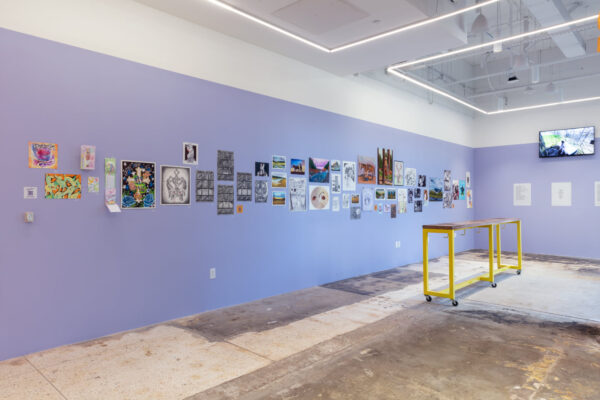
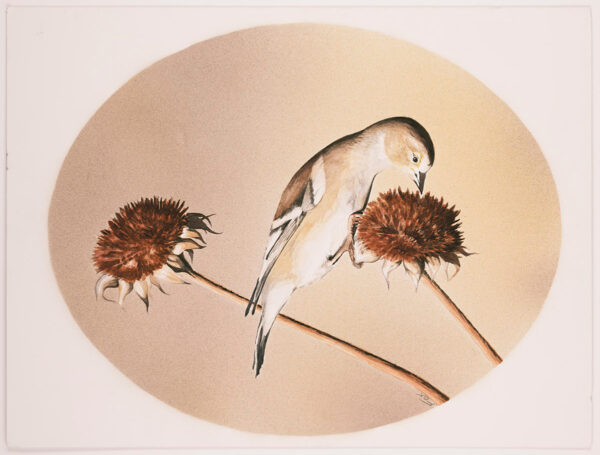
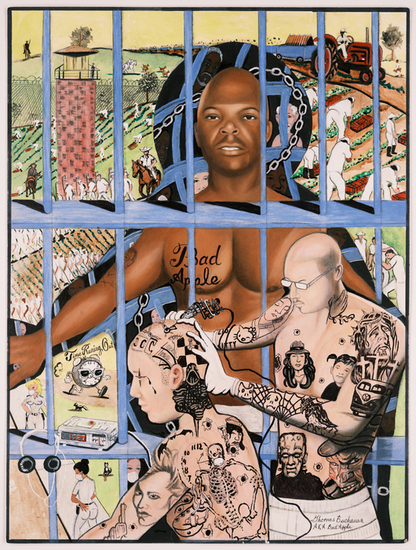
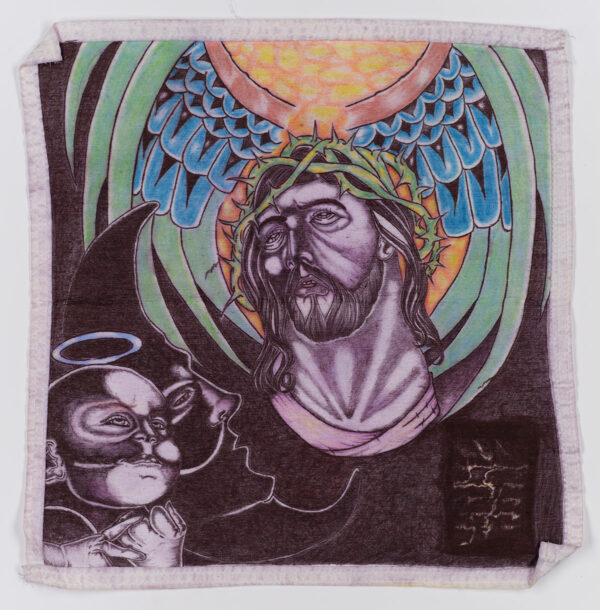
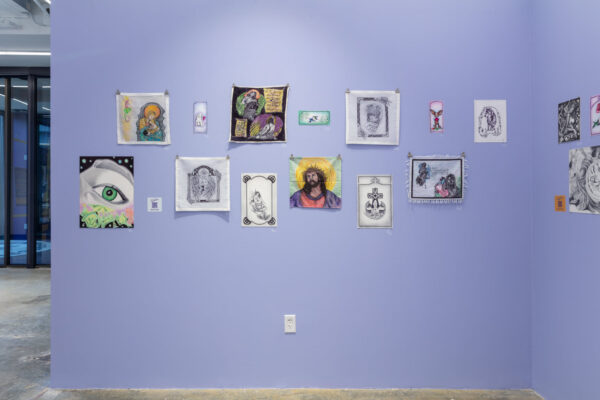
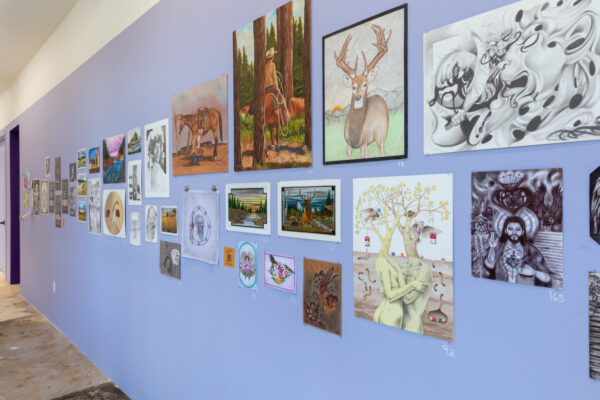

2 comments
Wonderful review – thank you so much.
Thank you so much for taking out the time to visit and write about Arts of Oppression. Carrying a message of Hope and Redemption to those behind our walls of incarceration is important. We appreciate the platform.